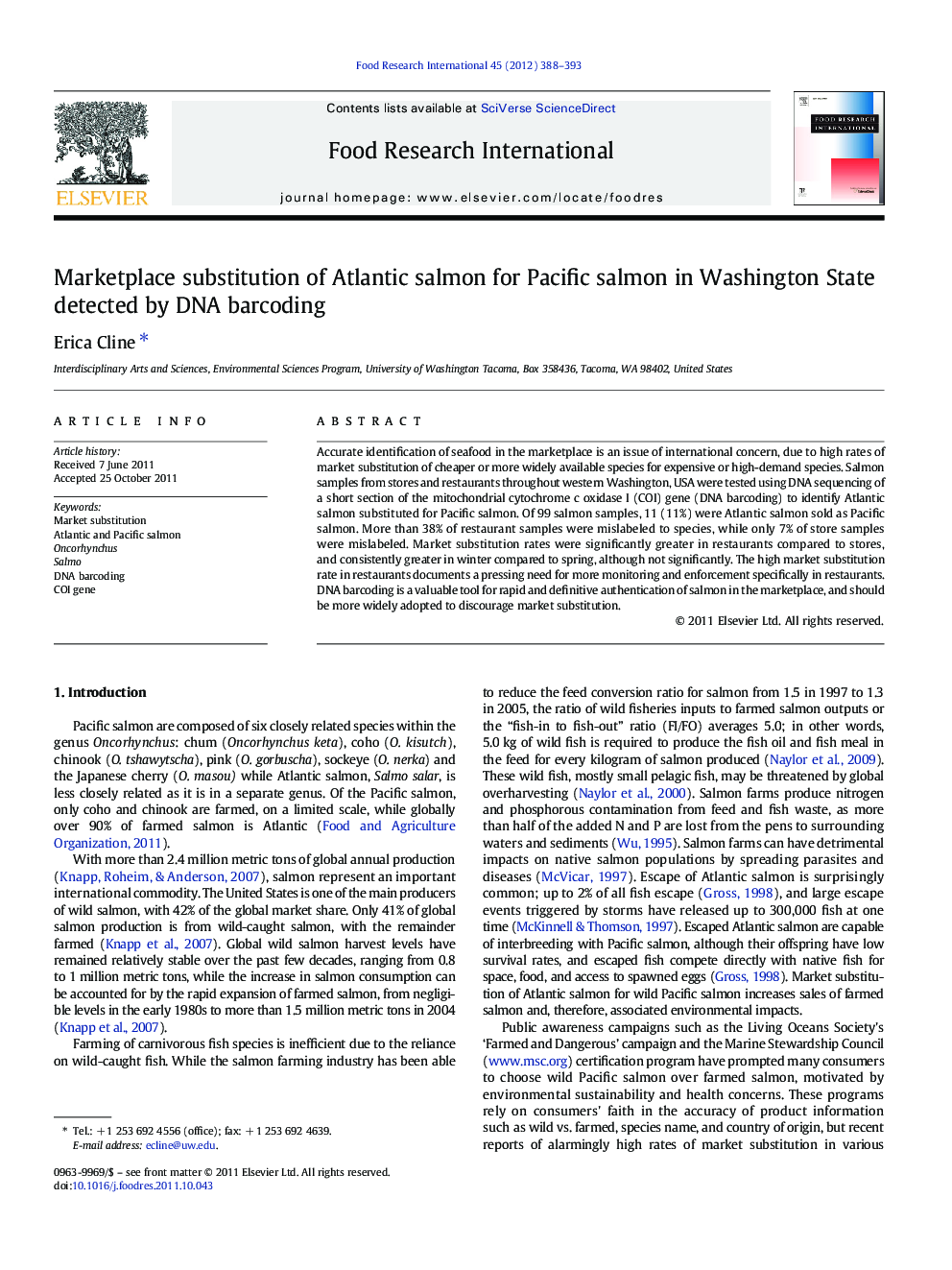| Article ID | Journal | Published Year | Pages | File Type |
|---|---|---|---|---|
| 6399442 | Food Research International | 2012 | 6 Pages |
Accurate identification of seafood in the marketplace is an issue of international concern, due to high rates of market substitution of cheaper or more widely available species for expensive or high-demand species. Salmon samples from stores and restaurants throughout western Washington, USA were tested using DNA sequencing of a short section of the mitochondrial cytochrome c oxidase I (COI) gene (DNA barcoding) to identify Atlantic salmon substituted for Pacific salmon. Of 99 salmon samples, 11 (11%) were Atlantic salmon sold as Pacific salmon. More than 38% of restaurant samples were mislabeled to species, while only 7% of store samples were mislabeled. Market substitution rates were significantly greater in restaurants compared to stores, and consistently greater in winter compared to spring, although not significantly. The high market substitution rate in restaurants documents a pressing need for more monitoring and enforcement specifically in restaurants. DNA barcoding is a valuable tool for rapid and definitive authentication of salmon in the marketplace, and should be more widely adopted to discourage market substitution.
⺠Market substitution of Atlantic for Pacific salmon detected via DNA barcoding. ⺠More substitution was detected in restaurants than in stores. ⺠More substitution was detected in winter than during spring salmon runs. ⺠Effective monitoring and enforcement are needed.
